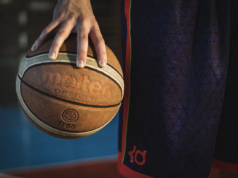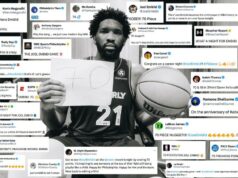In 1999, fresh off their first NBA Championship, with a roster set to return almost in its entirety, the San Antonio Spurs traded their first round pick, Leon Smith, and tabbed a few foreign prospects in the second round; most notably, one Emanuel Ginobili (as he was called on draft night) with the 57th pick.
On that night the Spurs practically invented the draft-and-stash—a strategy in which they select an intriguing young foreign prospect and allow them to develop overseas on someone else’s dime. It’s a process that has served the Spurs well, working as a sort of pseudo-free agent pipeline of established players to which the Spurs have exclusive negotiating rights. By selecting Livio Jean-Charles (France) in the first round, and Deshaun Thomas (Ohio State) in the second, the Spurs are once again taking the long view with their draft.
Jean-Charles was pegged as one of the top-20 players on the Spurs’ draft board, according to general manager R.C. Buford. At 6-9, with a 7-3 wingspan, Jean-Charles is a quality athlete, though described as more fluid than explosive. His potential is evident, as he showcased in a 27-point, 13-rebound performance at the Nike Hoop Summit against the United States’ best high school players. But his skill set is unrefined and a long ways from accessing the full depth of that talent, and Buford indicated he would be left in Europe to develop, saving the Spurs a $900,000 cap hit they can use to re-sign their own free agents or pursue another that can help immediately.
“We like his size, we like his athleticism. We’re hopeful he can play a couple of positions,” Buford said. “We think it’s a real good development opportunity. He plays for a very good coach and a very respected program. It’s a program that we’ll be able to partner with well.”
It’s a program with Spurs ties. Jean-Charles, 19, plays for ASVEL Lyon-Villeurbanne of the French Pro A League, of which Tony Parker owns a minority sake.
Those ties are key, as one might assume that the Spurs’ will hold some sway over his development process even while he’s still not officially connected to the parent club. One might wonder if Parker’s affiliation with ASVEL might work in the same capacity as the Austin Toros—developing players away from San Antonio, though against superior competition than found in the NBDL, and without triggering the clock on their valued rookie contracts.
With their second round pick, the Spurs took Deshaun Thomas out of Ohio State. As a junior, Thomas averaged 19.8 points and 5.9 rebounds, though he might be more memorable for refusing to give the Spurs his cell phone number until they drafted him. Thomas has a knack for scoring, though he’ll half to sharpen a few of his skills to fully utilize that ability at the NBA level.
“He can play a couple of positions,” Buford said. “I think everybody was relatively surprised [he was available]. He’s a scorer. You can put him in the post, he can slash. I don’t know if you’re going to be overwhelmed by any one thing, it’s the package that’s pretty good.”
The common theme tying these two picks together is flexibility. Notice that Buford mentioned their potential to play multiple positions? This draft was about the future. In the present, the Spurs were only a play or two away from winning their fifth NBA championship; a gap not likely to be bridged by the 28th or 58th pick in the draft. By the time these players are ready to contribute, Duncan, Ginobili, and possibly Parker, will likely be gone. Young, versatile, and malleable, there’s no telling how (or if) these picks will fit into the Spurs’ needs. But then, the same could be said coming off the Spurs’ first Finals run, when a stocked Spurs roster took a flier on their future so many years ago.





